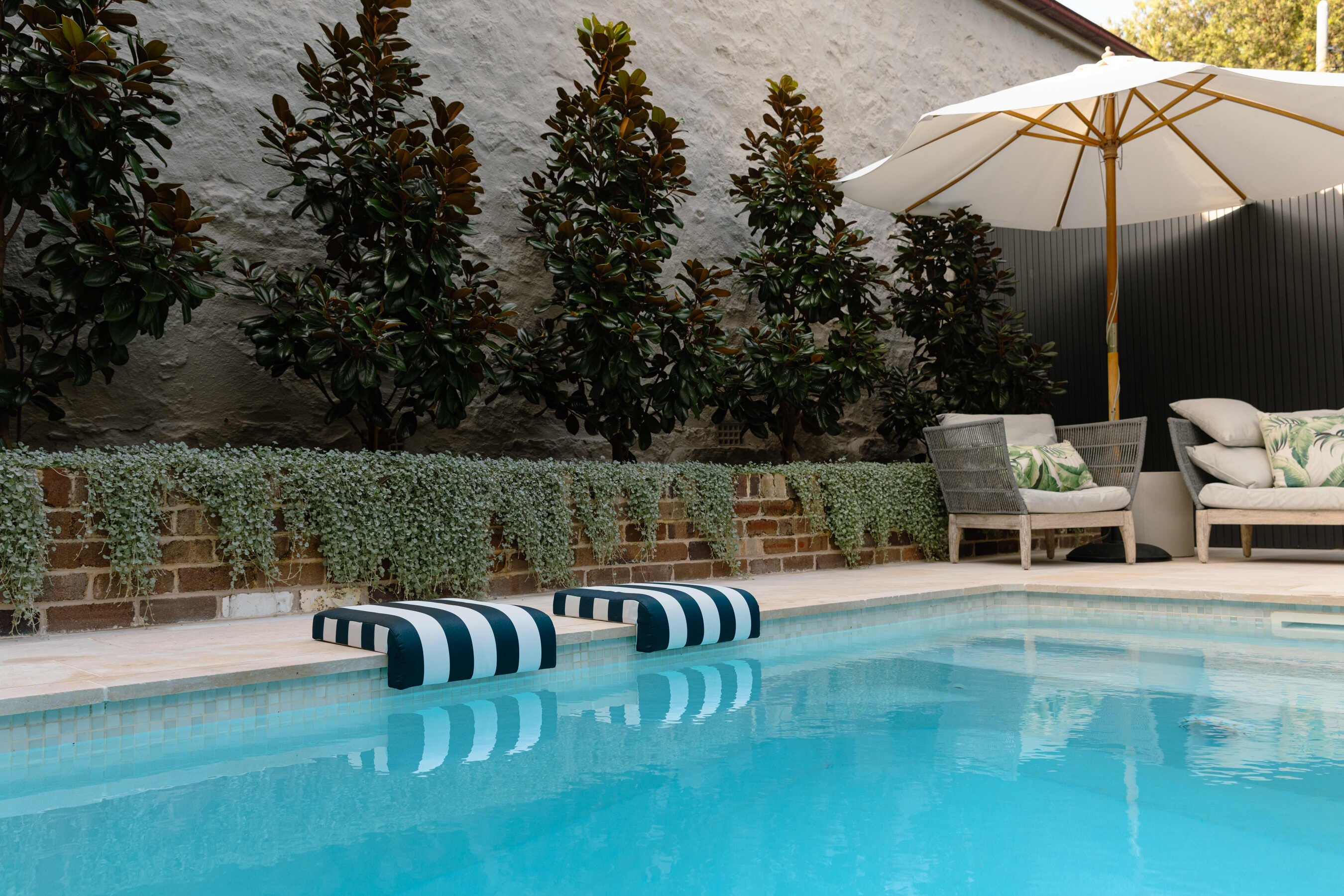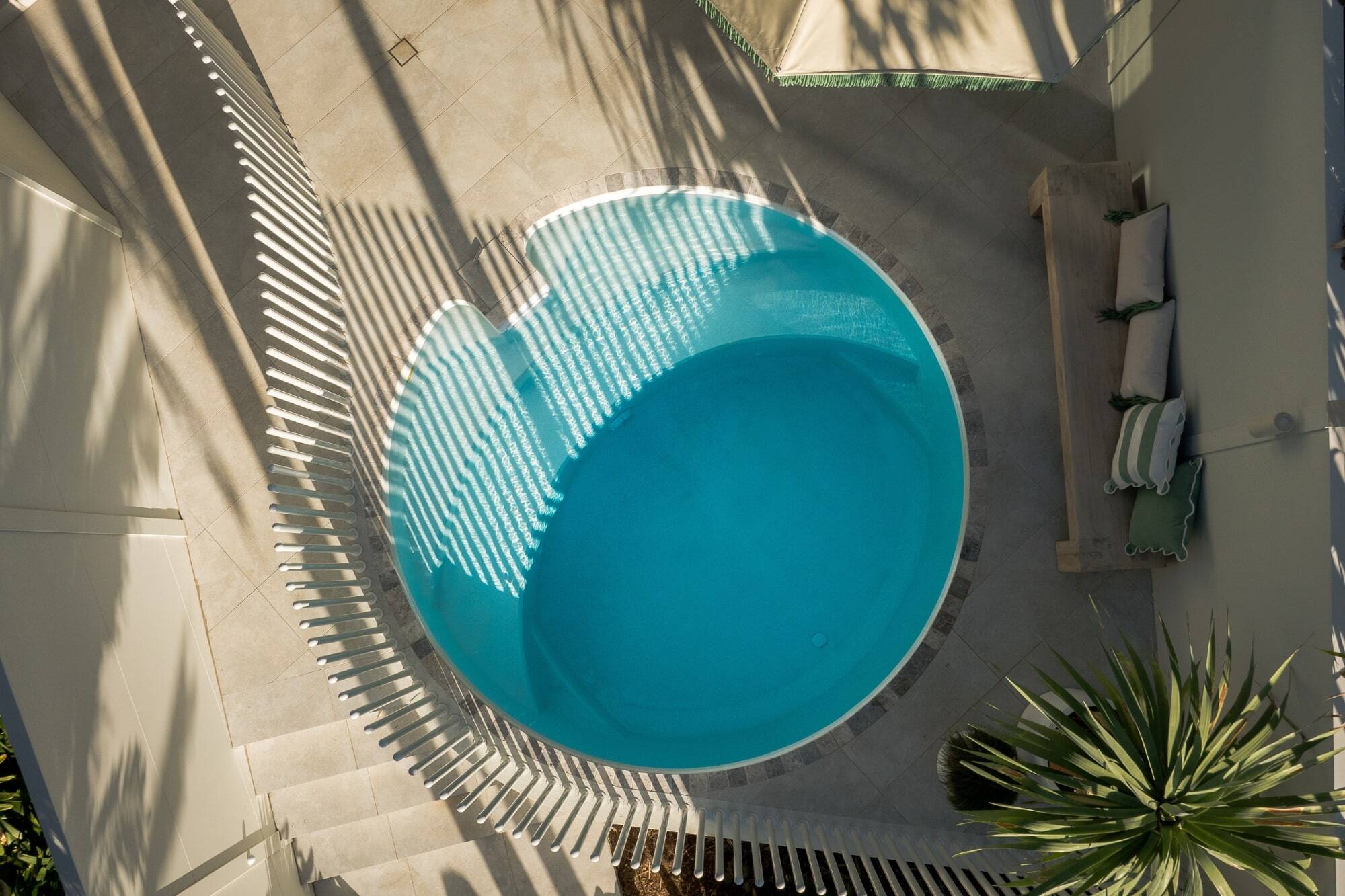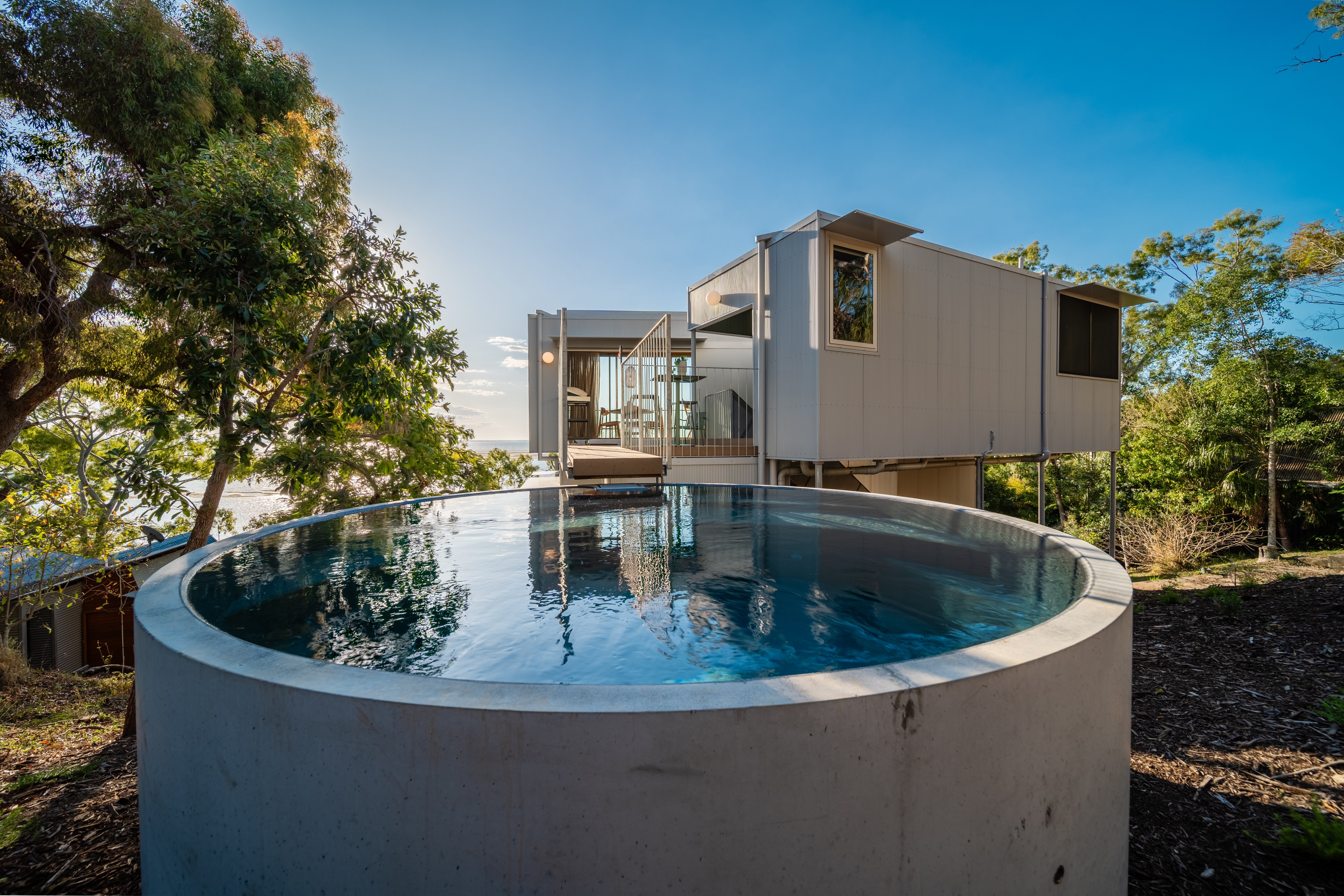If you’re looking to build efficiently, safely, and sustainably, prefabrication construction could be the answer. With components that can be assembled on-site much faster than traditional construction methods, prefab construction offers advantages that are hard to ignore. In saying that, prefab isn’t suitable for every project. We’ve outlined some important factors you should weigh before deciding if prefab will benefit your build.
Benefits Of Prefab Construction
At Plungie, we’re obviously fans of prefab. It’s an integral part of our business and has allowed us to disrupt an outdated pool-building industry. Here are just some of the advantages of prefab construction that we’ve leveraged — we think it’s time builders and homeowners take notice, too.
Cost-Effective
Prefab structures are generally mass-produced, so companies can take advantage of economies of scale to reduce overall project costs. Because construction takes place off-site in a controlled environment, there’s also less chance of variations or delays. As such, your project is more likely to stay on budget when compared to a traditional build.
Saves Time
Off-site construction is the ultimate time-saver. If planned well, the prefab structure can be manufactured while the construction site is being prepared, killing 2 birds with 1 stone. Once the prefab structure arrives on site, it can also be assembled quickly. The Modular Construction: From Projects to Products report by McKinsey & Company found that prefab reduces overall project timeframes by up to 50%. Less time on-site means reduced labor costs and greater savings.
Addresses A Skilled Labour shortage
In April 2022, there were approximately 440,000 job openings in the US construction industry. As such, prefab could soon be necessary to combat a skilled labor shortage. Prefab systems are easy to assemble and install, so less skilled labor is required on-site. Plungie pools are proof of this, as they can be installed by a home builder or owner-builder rather than a specialist pool company.
Improved Health And Safety
The US Bureau of Labor Statistics (BLS) found that 31.4% of on-site injuries were caused by falls, trips, and slips. Moving construction to a factory environment mitigates the risk of these injuries by providing shelter from wet or icy weather conditions. There’s also less chance of debris being left on the factory floor that workers could trip on. On top of this, the majority of off-site construction can be done at ground level, so there’s less risk of falling from height, and in most factory settings, there is an onsite safety team that monitors work areas to prevent accidents. Learn more in our article about the Health And Safety Benefits Of Prefab Construction.
Quality Control
A factory environment can provide superior construction quality. With better lighting, specialized equipment, and shelter from the elements, prefab companies have more control over the manufacturing process than traditional builders. There’s also more opportunity for quality assurance on the factory floor prior to shipping. Read our article, How Prefabrication Can Improve Quality In Construction, to find out more.
Reduced Site Disruption
As much as we try to avoid it, construction sites can often cause disruption to the surrounding community — whether it’s noise pollution, litter, or limited street access. The speed and simplicity of prefab construction minimize this disruption.
Lower Environmental Impact
Of all the off-site construction benefits, reduced environmental impact is one of the most exciting. A 2022 study from the University of Cambridge and Edinburgh Napier University found that modular-constructed homes produce up to 45% fewer carbon emissions than traditional residential construction methods. Because prefab structures are manufactured with precision, they also create less material waste.
Disadvantages Of Prefab Construction
Despite the many advantages of prefab construction, there are 3 main reasons why it’s not a suitable solution for every project.
Transportation
Complying with road height and width requirements can be a challenge when transporting prefab structures to their final location. This is less of a limitation for 2D prefab systems but can become difficult for large 3D prefab systems like modular homes. The larger the structure, the greater the risk of damage as it’s transported from factory to site.
This isn’t an issue with a Plungie. The Max may be the largest precast concrete pool on the market, but it still meets the relevant transport requirements to get anywhere.
Lesser Known Construction Costs
Although we have our own impressive factory spaces, not all prefab companies work this way. Some companies operate out of rented factory spaces, so you may need to pay a rental fee on top of the actual prefab product cost.
You’ll also need to consider the cost of installation before starting your project. Many prefab structures (including Plungie pools) need to be lifted into place, so crane hire should be factored into your budget.
You can create cost efficiencies by installing your Plungie prior to starting construction. This allows you to utilize other trades that will be on site for the house build, including plumbers, electricians, and excavator operators.
Lack Of Customisation
While more options for customization are becoming available, mass production is still central to the success of prefab systems. If customization is key to your project, prefab may not be the solution for you.
Although Plungie pools are prefabricated, it’s still possible to achieve a custom look with our four models and six interior ecoFinish colors. With other finishings, such as waterline tiles, coping tiles, and landscaping, you can ensure your Plungie aligns with the project’s aesthetic.
Despite these challenges, we believe prefab’s a winner. The improvements in workplace health and safety, sustainability, and quality are too important to ignore. As prefab construction becomes more popular, we’re confident that companies will find innovative solutions to the current challenges in the industry. In short — keep supporting prefab!



